This article concerns the period 339 BC – 330 BC.
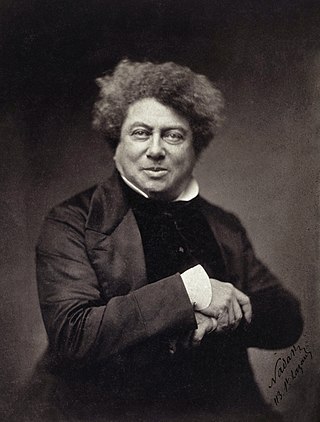
Alexandre Dumas, also known as Alexandre Dumas père, was a French writer. His works have been translated into many languages and he is one of the most widely read French authors. Many of his historical novels of adventure were originally published as serials, including The Count of Monte Cristo, The Three Musketeers, Twenty Years After and The Vicomte of Bragelonne: Ten Years Later. His novels have been adapted since the early twentieth century into nearly 200 films.

Roxana was a Sogdian or a Bactrian princess whom Alexander the Great married after defeating Darius, ruler of the Achaemenid Empire, and invading Persia. The exact date of her birth is unknown, but she was probably in her early teens at the time of her wedding to Alexander the Great.
Jean de Meun was a French author best known for his continuation of the Roman de la Rose.

The Roman de Fauvel is a 14th-century French allegorical verse romance of satirical bent, generally attributed to Gervais du Bus, a clerk at the French royal chancery. The original narrative of 3,280 octosyllabics is divided into two books, dated to 1310 and 1314 respectively, during the reigns of Philip IV and Louis X. In 1316–7 Chaillou de Pesstain produced a greatly expanded version.

The Lancelot-Grail, also known as the Vulgate Cycle or the Pseudo-Map Cycle, is an early 13th-century French Arthurian literary cycle consisting of interconnected prose episodes of chivalric romance in Old French. The cycle of unknown authorship, presenting itself as a chronicle of actual events, retells the legend of King Arthur by focusing on the love affair between Lancelot and Guinevere as well as the religious quest for the Holy Grail, expanding on the works of Robert de Boron and Chrétien de Troyes.
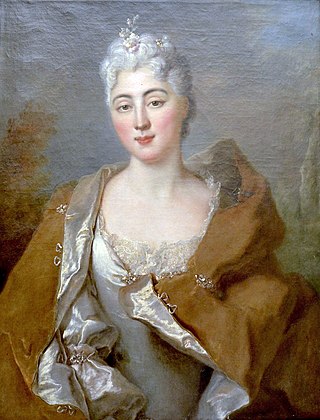
Charlotte Aïssé, French letter-writer, was the daughter of a Circassian chief, and was born about 1694.

Medieval French literature is, for the purpose of this article, Medieval literature written in Oïl languages during the period from the eleventh century to the end of the fifteenth century.

The Alexander Romance is an account of the life and exploits of Alexander the Great. Although constructed around a historical core, the romance is mostly fictional. It was widely copied and translated, accruing various legends and fantastical elements at different stages. The original version was composed in Ancient Greek some time before 338 CE, when a Latin translation was made, although the exact date is unknown. Several late manuscripts attribute the work to Alexander's court historian Callisthenes, but Callisthenes died before Alexander and therefore could not have written a full account of his life. The unknown author is still sometimes known as Pseudo-Callisthenes.

De casibus virorum illustrium is a work of 56 biographies in Latin prose composed by the Florentine poet Giovanni Boccaccio of Certaldo in the form of moral stories of the falls of famous people, similar to his work of 106 biographies De Mulieribus Claris.

Laurent de Premierfait was a Latin poet, a humanist and in the first rank of French language translators of the fifteenth century, during the time of king Charles VI of France. To judge from the uses made of Du cas des nobles hommes et femmes in England, and the sheer number of surviving manuscripts of it, it was extremely popular in Western Europe throughout the fifteenth century. Laurent made two translations of the Boccaccio work, the second considerably more free. A large percentage of surviving manuscripts are carefully written and illuminated with illustrations.

The Roman d'Alexandre, from the Old French Li romans d'Alixandre, is a 16,000-verse twelfth-century Old French Alexander romance detailing various episodes in the life of Alexander the Great. It is considered by many scholars as the most important of the Medieval Alexander romances. Many of the manuscripts of the work are illustrated. The poem is generally divided into four branches. The final form of the poem is largely credited to Alexandre de Bernay who probably placed the branches in the order we find them, reworked the first branch into alexandrines, incorporated the text of Pierre de Saint-Cloud, and added verses to join each branch.

Galiens li Restorés, or Galien le Restoré or Galien rhétoré, is an Old French chanson de geste which borrows heavily from chivalric romance. Its composition dates anywhere from the end of the twelfth century to the middle of the fourteenth century. Five versions of the tale are extant, dating from the fifteenth century to the sixteenth century, one in verse and the others in prose. The story—which is closely linked to the earlier chansons de gestePèlerinage de Charlemagne and The Song of Roland —tells of the adventures of Galien, son of the hero Olivier and of Jacqueline, the daughter of the (fictional) emperor Hugon of Constantinople.
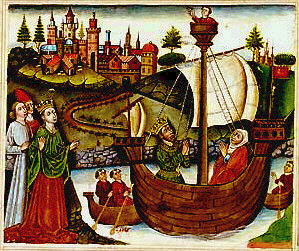
The Book of the Knight Zifar is the earliest fictional adventure tale in prose in the Spanish language. It was written around 1300, probably by a cleric of Toledo, Ferrand Martínez, who is mentioned in the prologue. The book has much affinity with contemporary works of chivalric romance.
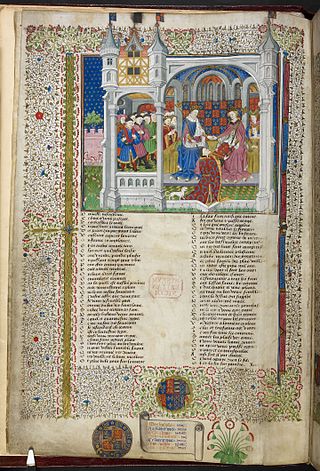
The Talbot Shrewsbury Book is a very large richly-illuminated manuscript made in Rouen (Normandy) in 1444/5. It was presented by John Talbot, 1st Earl of Shrewsbury to the French princess, Margaret of Anjou, in honour of her betrothal to King Henry VI. It contains a unique collection of fifteen texts in French, including chansons de geste, chivalric romances, treatises on warfare and chivalry, and finally the Statutes of the Order of the Garter. The work is an excellent example of book production in Rouen in the mid-fifteenth century and provides a rare insight into the political views of the English military leader and close confidant of the crown, John Talbot.

Bibliothèque bleue is a type of ephemera and popular literature published in Early Modern France, comparable to the English chapbook and the German Volksbuch. As was the case in England and Germany, that literary format appealed to all levels of French society, transcending social, sex, and age barriers.
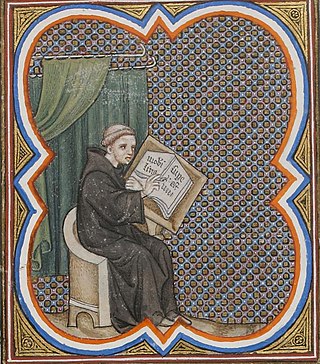
Primat was a French Benedictine monk and historian of the abbey of Saint-Denis near Paris. He composed two histories of France with a royal focus, one in Latin and the other in Old French. His Latin chronicle covers the years 1248 to 1277 but now survives only in an Old French translation and in excerpts incorporated into the works of others. It contains a detailed account of the reign of Louis IX, making it one of the most important contemporary sources for that reign. His French chronicle, the Roman des rois, covers the entire history of France down to 1223. It was completed around 1274 for Philip III and its presentation copy is extant. It is the earliest version of what would become the Grandes Chroniques de France, the first official history of France.
Jehan de Paris is an anonymous prose romance written at the end of the 15th century, probably around the years 1494–1495.

Bibliothèque nationale de France fr. 113–116 is an Illuminated manuscript, now rebound as four manuscripts, commissioned by Jacques d'Armagnac, Duke of Nemours and executed by the workshop of Évrard d'Espinques around 1475. They contain the Lancelot-Grail cycle of romances, also known as the Vulgate Cycle, and constitute one of the most complete examples of Arthurian texts in prose, illuminated with 209 miniatures.




















